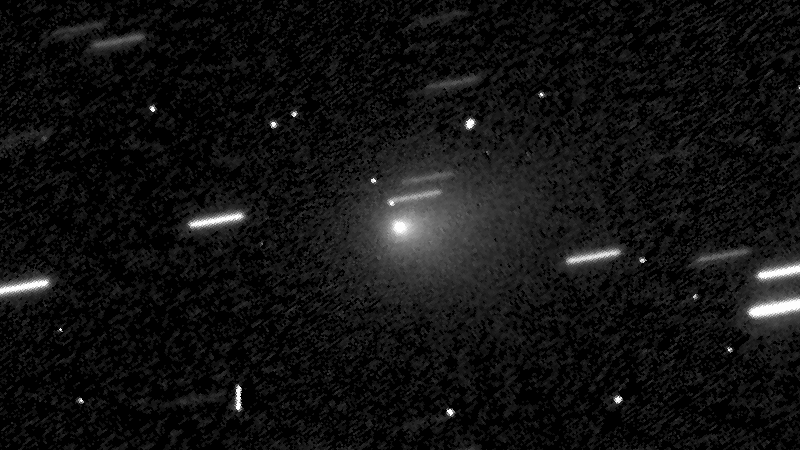The eyes of every astronomer widened this year when an interstellar traveler was discovered in our solar system.
Despite some suggestions that it could be an alien spacecraft, observations from some of the most powerful telescopes quickly revealed it to be a comet rocketing our way. It might not be aliens making first contact, yet 3I/Atlas, as only the third documented interstellar object to pass through the solar system, still has plenty to teach us, says Jacqueline McCleary, an assistant professor of physics at Northeastern University.
“Interstellar objects, which all seem to be comets, are the only things that we’ve ever gotten physical observations for within our solar system that originated outside our solar system,” McCleary says. “This is sort of like a messenger afar.”
The moment astronomers discovered 3I/Atlas in July, it was clear it was not a normal comet. For starters, it seemed to be emitting its own light, which is bizarre for a comet that was, at that time, so far from the sun.
Comets are normally extremely dark to the point where astronomers struggle to see them. As they get closer to the sun, solar radiation causes volatile compounds and ices on their outside, which are highly reflective, to melt. The resulting effect is, at first, a kind of proto-tail called a coma, which grows into the tail we have come to associate with comets streaking through the night sky.
“Jupiter is five astronomical units or five Earth-Sun distances away from the sun, and most comets have to get closer than that for the solar radiation to get intense enough to start this melting, outgassing tail creation,” McCleary says. “Comet 3I/Atlas formed a coma when it was outside the orbit of Jupiter, at a much greater distance than was normal.”

For 3I/Atlas to have started glowing as far out from the sun as it did was abnormal enough to result in some theorizing early on that it must be an alien spacecraft. What else that small and quick would be producing light?
However, subsequent observations revealed it not only had a comet-like tail but that it was likely rich in carbon dioxide “because carbon dioxide ice, aka dry ice, … melts very easily,” McCleary explains. NASA’s James Webb Space Telescope ultimately revealed the comet was unique for reasons that went beyond its interstellar origins.
Not only was it made of carbon dioxide, but it had a carbon dioxide ice-to-water ice ratio that was literally out of this world, 8:1, which is among the highest ever recorded. It offers a potential glimpse into the conditions that exist in other solar systems and how those systems formed in the first place.

“Clearly, the 3I/Atlas parent system maybe was really rich in carbon dioxide or maybe there were weird radiation processes that left a lot of carbon dioxide and boiled away everything else,” McCleary says. “Indirectly, trying to understand the composition of this comet and comparing it to the composition of other interstellar comets … can tell us about what solar system formation looks like in other solar systems at a really granular level.”
It’s still unclear where precisely 3I/Atlas originated from. It likely came from the Milky Way bulge, McCleary says, but tracing its exact origin will be difficult. In order for it to have escaped its parent solar system, the comet must have encountered a “gravitational perturbation” that disrupted its orbital path and set it on course to enter our solar system, she explains.
However, scientists could get an even more detailed glimpse of the comet when it crosses the orbit of Jupiter on its outward-bound path after October, revealing more about its nature. NASA’s Jupiter-orbiting Juno satellite will be in the best position to put eyes on the interstellar visitor.
“We could potentially get a very close look at that comet, and it could be particularly interesting because it will have gone as close to the sun as it’s going to get and lots of carbon dioxide will have boiled off … so we’ll be able to see what’s left,” McCleary says.
Learning more about 3I/Atlas will not only be useful for understanding what other solar systems are like, but why our solar system is so unique that it created the conditions for sentient life to exist.
“It’s a window into what the pristine material is for other solar systems, which is precious, and, in turn, helps us refine our models of what solar system formation can look like,” McCleary says. “Is our solar system common or rare? It seems to be relatively rare, and this helps us quantify that.”
Science & Technology
Recent Stories
Source link


